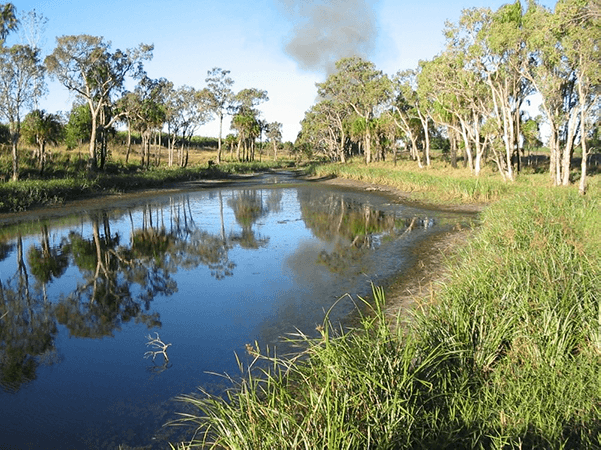Potential benefits from this intervention:
- Less intensive preparation and maintenance needs than active revegetation.
- Where strategically implemented it can be cost effective for treating large areas.
- There may often be more rapid growth and seasonal hardiness than actively planted revegetation.
- Improved water quality resulting from reduced instream temperature due to localised shading. Shading provides fish habitat.
- Provides terrestrial wildlife corridors.
- A vegetated riparian zone may lower the intensity of fire events.
- Seed stock in ground that naturally regenerates can be more resilient than plants that grow after direct seeding.
Potential negative implications from this intervention:
- Higher costs than allowing for passive management of vegetation.
Intervention considerations:
- Seek appropriate specialist advice and check legal obligations (e.g. permits).
- Consider if natural regeneration might occur without intervention.
- Assess whether the site is representative of remnant vegetation structure, floristics and active recruitment processes relative to historical baseline conditions.
- Determine if site soil and/or moisture conditions have changed from the historical preclear baseline.
- Where geomorphic stability issues (e.g. river sedimentation or bank erosion) exist, consider if these should be addressed first.
- Assess if the objectives and timeframe of the regeneration plan for the site are achievable with available management resources.
- The timing of management interventions is ideally optimised by considering seasonal climatic conditions such as soil moisture, rainfall, flood, frost or fire risks.
- Where native vegetation requires fire to promote regeneration, controlled burns may be needed.
- There may be situations where the soil conditions have been altered, such as compaction due to grazing. In these circumstances the soil may be lightly ripped to minimise disturbance but provide conditions for seed germination and seedling growth. Care should be taken not to rip flow lines or banks which may exacerbate erosion.
- Sites may require a change in water regime to remove exotic species that are stopping natural regeneration. Similar to fire management in terrestrial environments, specific flow regimes may be used to remove weeds and promote natural regeneration. Environmental flows may be one method to achieve this.
- While each site may be different in terms of its requirements, the key principles are to work on an area with the size and position that will have the greatest benefit that can also be maintained. An area with the highest weed growth may appear like the place to start, but this may be the most disturbed part of the site. Consider whether working on a less weed infested section may be a better starting point to build regeneration from.
- Instream, weed removal working from upstream to downstream may reduce the downstream supply of weed propagules.
- Safety of volunteers and employees including seasonal exposures (e.g. heat) and high risk areas (e.g. crocodile presence in waterways or areas with soil contaminant risks).
Publications:
Chenoweth EPLA and Bushland Restoration Services. 2012. South East Queensland Ecological Restoration Framework: Guideline. Prepared on behalf of SEQ Catchments and South East Queensland Local Governments, Brisbane.
Chenoweth EPLA and Bushland Restoration Services. 2012. South East Queensland Ecological Restoration Framework: Manual. Prepared on behalf of SEQ Catchments and South East Queensland Local Governments. Brisbane.
Price, P. and Lovett, S. 1999. Riparian Land Management Technical Guidelines. LWRRDC. Canberra.
Rutherfurd, I.D., Jerie, K. and Marsh, N. 2000. A Rehabilitation Manual for Australian Streams, Volumes 1 and 2. CRC for Catchment Hydrology and LWRRDC. Canberra.
Links:
Resources - Queensland Fire and Biodiversity Consortium
Last updated: 22 June 2022
This page should be cited as:
Department of Environment, Science and Innovation, Queensland (2022) Assisted natural regeneration, WetlandInfo website, accessed 8 May 2025. Available at: https://wetlandinfo.des.qld.gov.au/wetlands/management/rehabilitation/rehab-process/step-4/intervention-options/assisted-natural-regeneration-mod.html

 — Department of the Environment, Tourism, Science and Innovation
— Department of the Environment, Tourism, Science and Innovation


